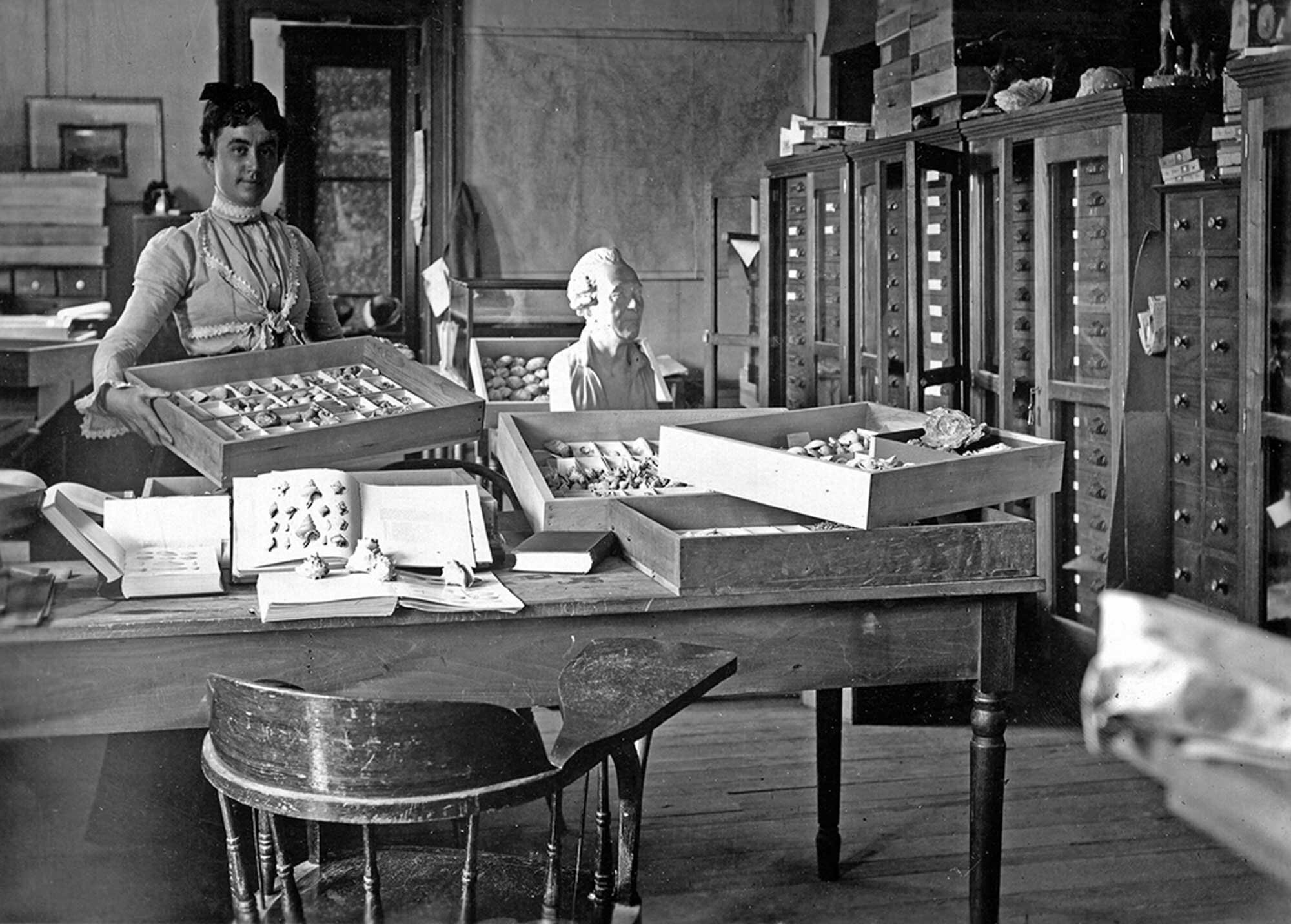Carlotta Maury
Carlotta Maury
Carlotta Maury
1874–1938
Carlotta Joaquina Maury was one of the first women to earn a Ph.D. in paleontology and enjoy a full professional career.
“Conditions in the interior were such that we were most urgently advised to abandon the attempt to reach Santiago [Dominican Republic], since Desiderio was entrenched there, and geologizing in the lonely thickets would certainly result in our being shot and never heard of again.”
— Carlotta Maury (1917) “Santo Domingo type sections and fossils, parts I and II”
Carlotta’s career was diverse and dynamic. She taught at universities, worked at the American Museum of Natural History, held positions in the oil industry, and contributed to geological surveys. She wrote major works on the fossil record of the United States Gulf Coast, the Dominican Republic, Puerto Rico, Trinidad, Venezuela, and Brazil.
Carlotta attended Harvard University’s separate all-women’s “Annex” and later transferred to Cornell University. She had prominent women mentors, including botanist Bertha Stoneman and Harvard administrator Elizabeth Cary Agassiz. Her Ph.D. advisor at Cornell was Gilbert Harris.
In 1916, Carlotta received a fellowship from Cornell that was created to support women in science. She led a fossil-collecting expedition to the Dominican Republic with two male assistants. Expecting danger, she packed a revolver for the trip. They worked in the Dominican Republic even as a revolution unfolded and the U.S. military forcibly occupied the country.
Carlotta learned that a rival team of researchers from the Academy of Natural Sciences in Philadelphia was working on similar fossils from the Dominican Republic. She raced to publish her results first. Publishing first would give her naming rights to any new species. Carlotta worked quickly. Luckily, Gilbert Harris managed his own paleontology journal at Cornell in which she could publish her work. Carlotta revealed her findings in a 250-page paper in Bulletins of American Paleontology on April 29, 1917, beating the rival research group by just one week.
Carlotta won the race to publish, producing a work that is still highly valued by paleontologists today. Her research specimens from the Dominican Republic eventually became part of the collections of the Paleontological Research Institution. Above are images of the original photographic plates that were used for her publication and her original, hand-written specimen and locality labels.
In her memorial, Carlotta was remembered as a scientist who enjoyed a challenge:
“Miss Maury was very particular as to what she undertook to do. No commonplace or routine work appealed to her; she was interested only in those problems which afforded a special opportunity to do something exceptional.”
— Chester A. Reeds (1939) “Memorial to Carlotta Joaquina Maury”
Carlotta through the years
PRI & Dominican Republic fossils
The Paleontological Research Institution has a long history of publishing research on the rich fossil record of the Dominican Republic, beginning with Carlotta Maury’s 1917 opus in the Bulletins of American Paleontology . It continues today with the Neogene Paleontology of the Northern Dominican Republic series, which began its run in the Bulletins of American Paleontology in 1986. The series now includes 24 volumes, with another scheduled to be published in 2021.
The research collections at PRI house thousands of fossil specimens of snails, bivalves, and corals from the Dominican Republic, most of which were collected by the Maury Expedition in 1916 and later by Emily and Harold Vokes in the 1970s and 1980s.
1916 Maury Expedition specimens
These fossil snail specimens were collected by the 1916 Maury Expedition to the Dominican Republic. All are from the Cercado or Gurabo formations and are about 5 to 6 million years old.
Selected works by Carlotta Maury
Maury, C.J. 1917. Santo Domingo type sections and fossils, parts I and II. Bulletins of American Paleontology 5: 165–460. Link
Maury, C.J. 1924 [1925]. Fosseis Terciarios do Brasil com descripção de novas formas Cretaceas. Serviço Geológico e Mineralógico, Brazil, Monographia, no. 4.
Maury, C.J. 1929. The Soldado rock type section of Eocene. The Journal of Geology 37: 177–181. Link
Maury, C.J. 1934. Fossil invertebrata from northeastern Brazil. Bulletin of the American Museum of Natural History 67: 123–179. Link
Biographical references & further reading
Arnold, L. 2009. The education and career of Carlotta J. Maury. Part 1. Earth Sciences History 28: 219–244. Link
Arnold, L. 2010. The education and career of Carlotta J. Maury. Part 2. Earth Sciences History 29: 52–68. Link
Brice, W.R. 1989. Cornell geology through the years. Cornell Engineering Histories, vol. 2. College of Engineering, Cornell University, Ithaca, New York.
Brice, W.R. 1996. Gilbert Dennison Harris: a life with fossils. Bulletins of American Paleontology 350, 154 pp. Link
Elder, E.S. 1982. Women in early geology. Journal of Geological Education 30: 287–293. Link
Gries, R.R. 2018. Anomalies—Pioneering women in petroleum geology: 1917–2017. Revised Edition. Steuben Press, Longmont, Colorado.
Reeds, C.A. 1939. Memorial to Carlotta Joaquina Maury. Proceedings for the Geological Society of America for 1938: 157-168. Link
Stricker, B. 2017. Daring to dig : Adventures of women in American paleontology. PRI Special Publication No. 54. Paleontological Research Institution, Ithaca, New York.



















